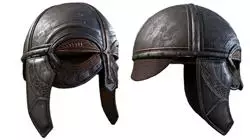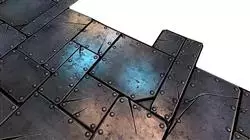University certificate
The world's largest faculty of video games”
Description
Become a true expert in the creation of textures for Hard Surface"

Learning how to create textures for the Hard Surface technique is easier with this training. Designed to strengthen and perfect texturing techniques, this postgraduate certificate responds to the increasing demand for this skill. Thanks to the methodology that TECH Global University uses, based on Relearning and Learning by Doing, learning is achieved in its theoretical dimension, but above all practical.
In order to learn how to create different textures, the student will begin this training by identifying variations in surface materials. Subsequently, you will delve into texturing techniques such as roughening, polishing and oxides. The objective is to acquire a broad understanding of the differences between them.
The contents prepare students for possible professional challenges and enable them not only to know how to create textures, but also to correct them and be able to give vivacity and dynamism to the projects they take on.
This postgraduate certificate in Hard Surface Texture Creation is characterized by being totally online. The multimedia materials and teaching resources will always be available to the student on the virtual platform, so that it will only be necessary to have an electronic device and internet connection to download the material and start developing the content proposed by the best teaching staff.
Be prepared to face professional texturing challenges and approach with a critical eye the new projects you take on as a video game graphics and image designer”
This postgraduate certificate in Hard Surface Texture Creation contains the most complete and up-to-date educational program on the market. Its most notable features are:
- The development of practical cases presented by experts in Hard Surface Texture Creation
- The graphic, schematic, and practical contents with which they are created, provide practical information on the disciplines that are essential for professional practice
- Practical exercises where self-assessment can be used to improve learning
- Its special emphasis on innovative methodologies
- Theoretical lessons, questions to the expert, debate forums on controversial topics, and individual reflection assignments
- Content that is accessible from any fixed or portable device with an Internet connection
With the Relearning and Learning by Doing methodologies, learn in an eminently practical way how to model with texturing for Hard Surface”
The program’s teaching staff includes professionals from the sector who contribute their work experience to this training program, as well as renowned specialists from leading societies and prestigious universities.
The multimedia content, developed with the latest educational technology, will provide the professional with situated and contextual learning, i.e., a simulated environment that will provide immersive education programmed to learn in real situations.
This program is designed around Problem-Based Learning, whereby the professional must try to solve the different professional practice situations that arise throughout the program. This will be done with the help of an innovative system of interactive videos made by renowned experts.
Start applying and distinguishing the different texturing techniques for Hard Surface modeling with this convenient online program"

A postgraduate certificate that specializes your professional career in the most convenient way: online, flexible and at your own pace"
Objectives
Thanks to this program, the student will be able to know in depth the different types of texturing for Hard Surface modeling and delve into the development of textures of three-dimensional models. Additionally, the curriculum focuses on knowing how to apply these techniques to bring realism to designs. Likewise, the content taught from a theoretical and practical perspective, allows working on real cases in the application of details with textures.

Learn in depth about the different types of texturing for Hard Surface modeling and delve into the development of textures for three-dimensional models"
General Objectives
- In-depth knowledge of the different types of Hard Surface modeling, the different concepts and characteristics to apply them in the 3D modeling industry
- Learn in detail the basics of 3D modeling in its various forms
- Generate designs for different industries and their application
- Be a technical expert and/or artist in 3D modeling for Hard Surface
- Know all the tools related to the 3D modeling profession
- Acquire skills for the development of textures and FX of 3D models
Specific Objectives
- Apply all texturing techniques for Hard Surface models
- Work on real cases in the application of details with textures
- Identify variations in PBR materials
- Have a broad knowledge of the differences in metallic materials
- Solve technical details using maps
- Learn how to export materials and maps for different platforms

TECH always offers a theoretical and practical perspective of the content so that the knowledge can be applied in real professional development"
Postgraduate Certificate in Hard Surface Texture Creation
Hardsurface texturing is a process that involves designing and applying textures for rigid or hard objects and surfaces, typically in the field of 3D animation and video games. The texture applied helps objects look more realistic, detailed and different from each other.
Texturing for 3D Hard Surface models is a process that involves the application of detailed, realistic surfaces that simulate real-life materials and patterns. The goal is to create a texture that matches the shape and geometry of the model in question, and gives it a more natural and authentic look. <7p>
Texture creation process for 3D Hard Surface models.
Material selection:
First, choose the material to be simulated on the object, such as metal, glass, leather, etc.
Creation of a base texture: A colored base texture is created that will serve as the basis for the creation of the more detailed textures. This base texture is used as a starting point for the creation of the shadow maps.
Shadow map development: The necessary shadow maps are created to apply shadow detail and realism to the texture.
Creation of additional textures: Additional textures, such as roughness, gloss and reflection textures, are added to create a more realistic effect.
Testing and tweaking: Real-time tests are performed to check that the texture fits the model well and see any necessary adjustments that need to be made to improve the appearance.
In this process texture editing programs, such as Adobe Photoshop, Substance Painter or Quixel, are used to paint the textures manually or by using photographs or pattern generation. The process is done in layers that are layered to create the desired aesthetic. These textures can be anything from polished metal to weathered fabric.
Creating textures for 3D Hard Surface models involves selecting the materials to be simulated, creating a base texture, developing the shadow maps, adding additional textures, and performing necessary testing and adjustments.







